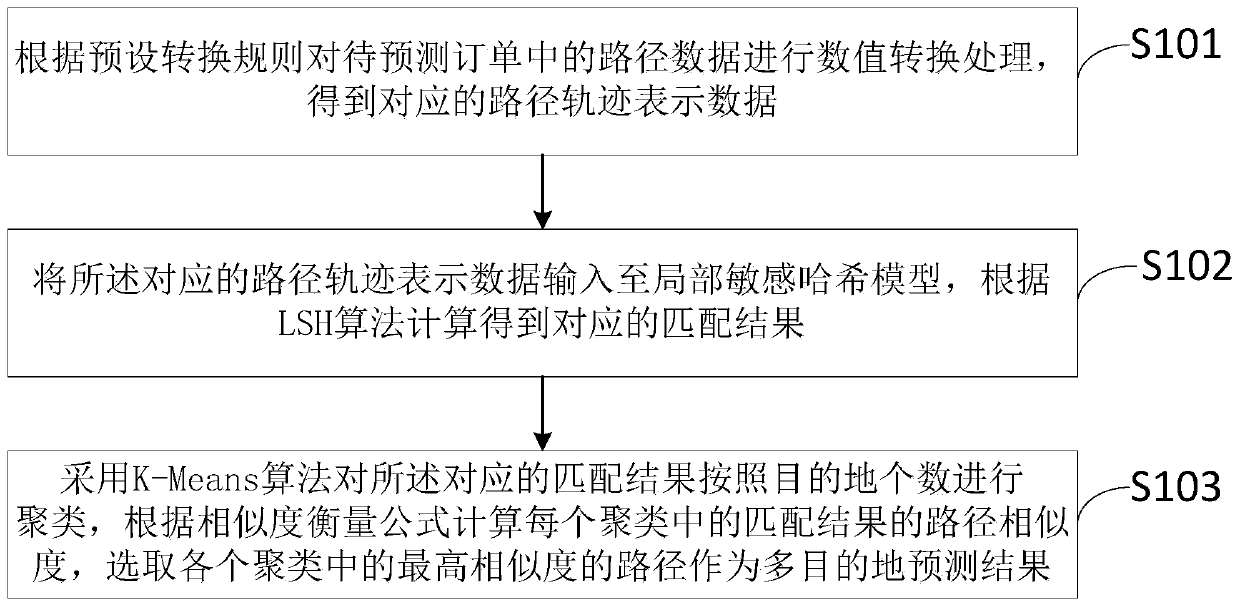Destination prediction method and system based on path trajectory and storage medium
A forecasting method and destination technology, applied in forecasting, geographic information database, structured data retrieval, etc., can solve problems such as unfavorable applications, and achieve the effect of improving forecasting ability
- Summary
- Abstract
- Description
- Claims
- Application Information
AI Technical Summary
Problems solved by technology
Method used
Image
Examples
no. 1 example
[0043] see figure 1 .
[0044] Such as figure 1 As shown, a method for predicting a destination based on a route trajectory provided in this embodiment at least includes the following steps:
[0045] S101. Perform numerical conversion processing on the route data in the to-be-forecasted order according to preset conversion rules to obtain corresponding route trajectory representation data;
[0046] Specifically, for step S101, for a path trajectory represented by WGS-84 coordinates, all trajectory points are two-dimensional. In order to input the path trajectory into the hash model, it is necessary to convert the two-dimensional point sequence into a one-dimensional array, that is, read and splicing line by line into a one-dimensional array by means of line scanning. After the path representation is specified, the input format of the model is also determined, that is, a one-dimensional array.
[0047] S102. Input the corresponding path trajectory representation data into t...
no. 2 example
[0079] see figure 2 .
[0080] Such as figure 2 As shown, an embodiment of the present invention also provides a destination prediction system based on path trajectory, including:
[0081] The path preprocessing module 100 is used to perform numerical conversion processing on the path data in the to-be-forecast order according to preset conversion rules to obtain corresponding path trajectory representation data;
[0082] Specifically, for the route preprocessing module 100, for a route track represented by WGS-84 coordinates, all track points are two-dimensional. In order to input the path trajectory into the hash model, it is necessary to convert the two-dimensional point sequence into a one-dimensional array, that is, read and splicing line by line into a one-dimensional array by means of line scanning. After the path representation is specified, the input format of the model is also determined, that is, a one-dimensional array.
[0083] The local sensitive hash model...
PUM
 Login to View More
Login to View More Abstract
Description
Claims
Application Information
 Login to View More
Login to View More - Generate Ideas
- Intellectual Property
- Life Sciences
- Materials
- Tech Scout
- Unparalleled Data Quality
- Higher Quality Content
- 60% Fewer Hallucinations
Browse by: Latest US Patents, China's latest patents, Technical Efficacy Thesaurus, Application Domain, Technology Topic, Popular Technical Reports.
© 2025 PatSnap. All rights reserved.Legal|Privacy policy|Modern Slavery Act Transparency Statement|Sitemap|About US| Contact US: help@patsnap.com


